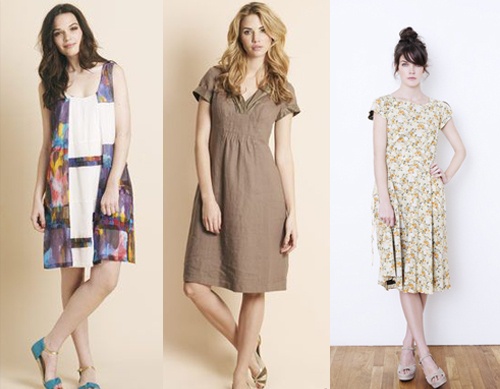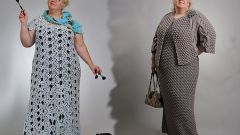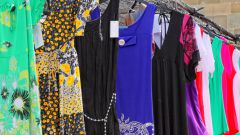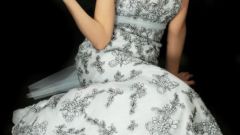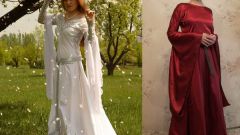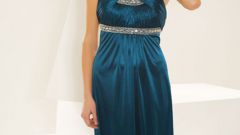Teaches old costumes, where the image always worked in the way that was in harmony with the silhouette and volume of the dress. Look through textbook histories of the suit. Go through the pages of history. Gothic: all forms of costume and appearance stretched upwards and very narrow a-line silhouette is simple and hard. And drawing on a smooth background as if scratched by a needle or a wire rarely scattered simple motifs of rhombuses, triangles, dry and geometrically correctly depict plants. Here it is impossible to imagine living full-blooded run colors. All strongly, briefly and as if emasculated — in harmony with the ideals of harsh asceticism. During the Renaissance silhouette becomes a mighty — heavy fabric, heavy folds and woven with gold is huge — one is enough for the bodice — similpelle roses. The magnitude of the figure, the roundness of shapes, the bulge — everyone echoes the ideal of physical grandeur. Another picture of the Rococo. In the fashion of the woman-doll, delicate and light, and consequently, the drawing most delicate of colors, masterly executed watercolour bouquets of flowers, rows of narrow bands interspersed with floral garlands. Color, slim figure — everything is fine, elegant, playful.
The beginning of the XX century, the art Nouveau style. Ideal — image spirituality: huge eyes, upturned luxuriant hair, dress, flowing, light fabrics. Pattern modest, gentle, not distracting from the main in the guise of spirituality faces, eyes. It is small peas, tiny as poppy seeds, specks, dots, thin twigs.
20 years — "industrial" image, where the presenter silhouette — rectangular-dress-shirt. And drawing one geometry: rhombuses, rectangles, peas. Finishing — straight borders, geometric panels. In 30 years this gives way to dramatically opposite — feminine, with long, almost to the ankles dress, with a smooth silhouette and plastic fabrics. And then changed the pattern. Soft colours and intricate pattern of small flowers — flexible and lyrical as the dress itself.
Mini fashion, the 60-ies. The most glamorous dress at this time is characterized by a pattern so large that a motive was enough for a whole dress. Understandable, because the dress itself is only a tiny vest free, flared silhouette, and the large pattern, enclosed in a small form, strives to go beyond the visual and will further reduce it.
So probably quite clear how the language of drawing long-winded and expressive. How to use it in contemporary fashion? Today, when the main word — style, it is important that the style of the illustration was corroborated by the style of the dress. And here it is useful to know that all patterns are divided into two types. One of them is static. The motifs are symmetrical, located in a simple rectangular or staggered. Most often it is the patterns, motifs — geometric. They require the same rigor in building design. Of a checker, for example, are not suitable ruffles, wings, kleczewie skirts, rounded lines of the seams. All edge details should Troitsa in a straight line, parallel to the direction of drawing, so desirable geometrically precise silhouette, the skirt will only be straight or pleated, collars and pockets — rectangular shape. Such fabrics are most often two-tone and is especially good tonal drawing, emphasizing design: stitching, piping, binding, belt, ribbon at the gate.
And the second type of pattern — dynamic, living, where patterns are freely scattered over the fabric. He, however, is not "at ease", if enclosed in a geometrical, strict shapes cut. It infringes any excess seam. Especially on the back, which is generally considered a marriage. A-line silhouette — in harmony with the style of the pattern. The larger, livelier figure, the more freedom it should be in a dress. Where he gets the will — tick the skirt, generously assembled sleeve, blouson waist, will decide on a specific style.
If the pattern is large, tune in immediately to the fact that in this case you will have to decorate not style, and the bright, bold piece of fabric. Buy this fabric with a reserve.
As you need to be careful if in the guise of the need to "correct", smooth, effaced! A young, stout woman, eyeing the fabric in spherical buds. "Where are you," advises a friend. You and so the district is sufficient."
Put her cloth. Face really began to feel rounder, tighter figure. Tried another in the soft spill of watercolors, but her figure seemed shapeless and vague, as the fabric itself. But finally I found easy outlines of branches with up direction. And there was a wonderful ending, gone all "roundness", the woman became taut and slender.
You, of course, noted that in the history of costume twice repeated large pattern: when it was necessary to give the figure monumentality, a greater volume in the days of mini fashion.
The woman was lean, with sharp facial features it is better to abandon all the hard, pointed at the figure. It should not, of course, completely abandon the dominant their appearance, otherwise it will lost the style of the image. But don't let it be just a narrow strip, and a strip, alternating with floral ornaments that will soften it. Peas — a small, rounded calyx flowers with sharp leaves, etc.
